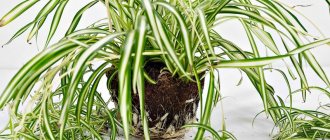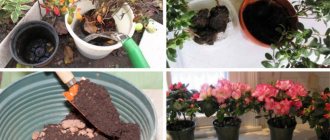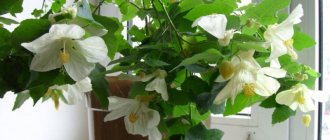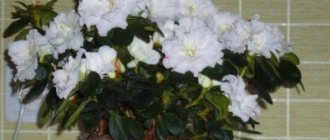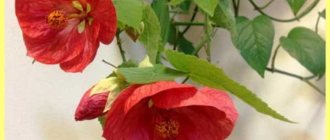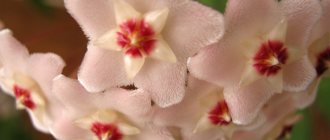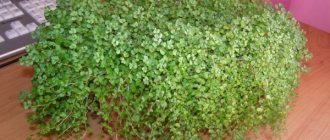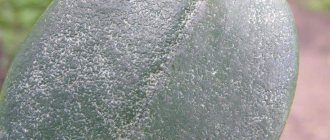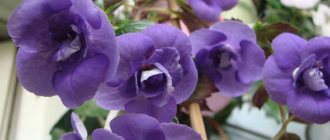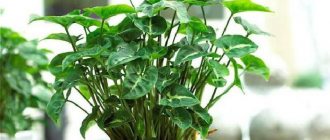Senecio is a less common name for the many-sided ragworts known to many plant growers, which are successfully grown both in the garden and as a flower in a pot at home. These herbaceous perennials are so diverse in form that it is difficult to accept the fact that they are all representatives of the same group. However, these are close relatives who are absolutely no different from each other in the principles of cultivation and care. It is a surprisingly diverse yet incredibly united flower culture.
Biological description
All godsons are classified as succulents, i.e. plants capable of heating up moisture reserves and living off them in depleted growing conditions. The species diversity of senecio is enormous, including coniferous greens, pea-like greens, and climbing ones like ivy. Their shoots can grow like vines, or they can form bushes and even trees. Moreover, they can be pubescent and bare, erect and drooping, and the shape of the leaves of this group of plants makes it almost impossible to cover. In nature, there are more than 3000 of them. And they all have only one thing in common - the classic inflorescence-basket.
Senecio is grown both as a potted and garden crop. There are species that are intended for cutting. From ragworts alone you can create a rich collection of succulents, which will be very diverse.
Botanical description of the plant
Raspberry (lat. Senecio) is a plant of the Asteraceae family.
The most ancient specimens of this culture are considered to be representatives of African species, which to this day can be found on the peaks of Mount Kilimanjaro.
Botanical characteristics of ragwort:
- Leaves - the arrangement of the plates is alternate, the shape is oblong.
- The stem is straight, with few branches.
- Flowers are usually buds, similar in appearance to daisies, collected in inflorescences at the tops of shoots, and come in red, blue, yellow, violet, orange and purple colors.
- The root system is taprooted and highly branched.
Popular varieties of Senecio, photo of flowers
With all the great variety of ragworts in indoor culture, the following varieties are most widespread.
Godson Rowley
The undoubted leader among the Senecio. It is valued for its rapid growth and spectacularly hanging thin shoots with “peas” of leaves seemingly strung on them. The plant is popularly called “string of pearls”. The inflorescences are spherical in shape and have a cinnamon scent.
Ashy ragwort (Senecio Maritima)
In nature and when grown indoors, it is a perennial; it is grown on the site as a one-year plant. It is valued by landscape designers for its particular attractiveness as carpet plantings. In warmer regions it is grown as a wintering balcony crop, which in Europe is especially valued as a Christmas decoration for homes. The foliage is silver in color, against which the bright yellow inflorescences look contrasting.
Thicker groundsel (Senecio Crasissimus)
An erect shrub variety with stems growing up to 40-50 cm. The shoots are branched, rough, the leaves are green with a grayish-silver tint, oval with a slight point at the ends. The inflorescences are yellow, formed on a high peduncle.
Creeping ragwort
A variety characterized by short stature. Forms a compact upright shrub about 10cm high. The leaves are ligulate, linear-lanceolate, small (3-4 cm), directed straight upward. The shoots are fleshy. Valued for its muted color in bluish-gray tones. It looks unusual in a flower pot and contrasts perfectly with decorative pebbles as mulch. The flowers are white, sparse, collected in baskets.
Senecio rooting
The stems are creeping, ampelous, thin. branching, up to half a meter in length. The elongated thick leaves are round in shape, sparsely spaced and look very impressive due to their claw-like bend.
Senecio is often confused with cineraria. These are close relatives, but still different plants.
Types for indoor growing
The following types of exotic succulents are most often grown in apartment conditions.
Rowley
Rowley's ragwort (lat. Senecio Rowleyanus) cannot be confused with other species of this crop. The cinnamon-scented string of pearls consists of creeping shoots decorated with beaded organs that retain water.
Read more about the conditions for growing Rowley's ragwort in an apartment here.
Haworth
The Haworth succulent species (lat. Senecio haworthii) looks like a perennial shrub. A plant with slightly branched shoots and cylindrical air feeding organs of a white-silver felt shade. Exotic blooms in spherical inflorescences of orange and yellow colors. It reaches a height of 30 cm.
Stapelium-shaped
Stapeliaeformis (lat. Senecio stapeliaeformis) is a miniature stem variety of succulent. It reaches a maximum height of 20 cm. There are small thorns on the trunks. Red inflorescences.
Creeping (Serpens)
Creeping ragwort (lat. Senecio serpens) - maximum height of the bush is 30 cm. Fleshy, tongue-like leaves of blue-green color thicken the vertical stem.
The flowers are small, collected in shields or baskets, creamy white in color.
Large-tongued (Macroglossus)
African ragwort Macroglossus or large-tongued (lat. Senecio macroglossus) resembles a vine or ivy. Its tangled stems reach a length of up to 1 m. Thick, spear-shaped leaf blades have characteristic yellow-white stripes. Small lemon-colored inflorescences form on the succulent in the winter season.
Dolphin or baby dolphin
The funny-looking dolphin (lat. Senecio peregrinus) is equipped with leaf plates that resemble the shape of dolphins. The flowering period begins in spring. The buds are soft pink or white. Height is 25 cm.
Articulated
Articulated groundsel (lat. Senecio articulatus) is a type of deciduous shrub.
It has a highly branched trunk up to 50 cm in height with pale gray branched shoots of round shape. The plant blooms in corymbose inflorescences with small yellow buds.
Herreina or nailleaf
The evergreen species Herrein (lat. Senecio Herreianus), also known as nail-leaf, has twisting, thread-like stems. Its spherical leaves resemble gooseberries, which makes the succulent similar in appearance to Rowley's ragus. Grown as an ampel plant.
taking root
Perennial rooting groundsel (lat. Senecio radicans) is endowed with long stems and gracefully curved leaf blades, reminiscent of bananas in shape.
A characteristic feature is the easy rooting of shoots.
In spring it blooms with white buds with a pronounced cinnamon scent. The length of the stems is up to 50 cm.
Arrowhead
Arrowhead (lat. Senecio scaposus) is a stemless or almost stemless species up to 30 cm high. Its shoots are very numerous, simple and short with light silvery leaves. In summer it blooms with spectacular single buds of a yellow-orange hue.
Euphorbia
Euphorbia ragwort (lat. Senecio anteuphorbium) is a perennial deciduous shrub up to 1.5 m high. During flowering, small baskets of a white-yellow hue are formed on the crop.
The erect stems have tiny, grey-green, lanceolate-shaped leaves with short spines.
Ficus
Ficus succulent (lat. Senecio ficoides) is incredibly good for cultivation in apartment conditions. It has a straight, succulent stem with vertical, pointed leaves. Flowering with light green buds occurs from April to May.
Blue
Senecio talinoides. It reaches a height of 45 cm. The leaves, up to 10 cm long, have a bluish color and resemble a sharpened pencil. As it grows, it forms a dense and lush carpet. It blooms with inconspicuous white flowers.
Home care
Senecio is, like all succulents, a hardy crop that can more easily withstand lack of care than heavy watering and other excessive measures. They can be easily grown at home by inexperienced and even careless gardeners. But you still need to know some simple rules of agricultural technology.
Lighting
Without exception, all varieties of crosses belong to light-loving crops, which, however, are ready to put up with some inconveniences in this regard. But they need to be provided with several hours of full sunlight. Ideal for them would be western and eastern window sills, slightly shaded southern windowsills at midday (the light should be diffused) or other locations of equal illumination. Lack of light is expressed in increased growth due to thinning shoots and loss of bright foliage color.
Watering
All succulents require moderate watering and do not tolerate waterlogging, and ragworts are the most sensitive in this regard. This point is the most difficult and strict to implement. Even during the active growing season (spring-summer), watering should be moderate. You don’t need to focus solely on the recommended frequency, but check each time whether the substrate is dry enough for the next watering. After the earthen ball dries out completely, it needs to be allowed to remain in this state for 2 days.
By autumn, these moderate procedures begin to be reduced even more, increasing the pause and preparing the succulent for wintering conditions. During the dormant period, almost dry conditions are created for the flower in the pot, occasionally adding moisture so that the greenery does not wilt. If there are no signs of loss of their elasticity, you don’t have to water the plant at all. It is unacceptable to use hard, calcareous water. In addition, it should always be well settled.
Air humidity
Crosses do not need humidified air at all; they feel even better in a dry room. Therefore, there is no need to take any measures to moisturize, much less spray the plant.
Temperature
Despite its southern origin, Senecio cannot be considered a fan of hot greenhouse conditions. Comfortable temperatures for it lie in the range of +22...+27C in spring and summer with a gradual decrease during the rest period, within the limits of what is possible for city apartments. If it is possible to provide cool temperatures of +12...+15C, the plants will have a great rest and will actively grow in the spring. The minimum threshold is considered to be +7C, but such a decrease is permissible only for a very short period.
Small deviations from the recommended temperatures are not critical, the main thing is that they should not be sharp.
As for drafts, the plant tolerates them well for a short time, but you cannot place a flower in a pot where there are constant drafts. One of the recommendations on how to care for senecio is frequent ventilation, since the culture loves fresh air. In the warm season, if possible, they can be placed outside, but not in direct sunlight. But any change in conditions should not be abrupt.
Top dressing
Feed the ragworts according to the usual strategy for succulents, 1-2 times a month, but only during the active growing season. Autumn and, especially, winter feeding can deprive the plant of the necessary resting phase. Ready-made compounds for succulents are used as fertilizers.
Methods for propagating ragwort
Reproduction is carried out using cuttings, layering and seeds. When propagating using the first method, a shoot 9-10 cm long is cut from the ragwort and a couple of lower leaves are removed, and then left to dry. After this, the prepared cuttings are planted in small pots with sandy soil for rooting and placed in a bright and warm place. After the cuttings have taken root, they need to be transplanted into a larger pot.
Propagation by seeds is not used very often. The seeds required for sowing must be fresh and pre-germinated. To obtain a beautifully grown plant, several prepared seeds are placed in one pot at once. Seed crops must be moistened by spraying with water. The emerged seedlings are transferred to new small pots at the cotyledon stage.
As soon as you notice that your plant has grown a lot, you can place small containers with substrate next to it and put the grown shoots in them, pressing them into the ground. After they take root, they need to be cut off from the mother plant.
Rowley's ragwort (Senecio roulianus) - cuttings and care
The soil
The easiest way is to use ready-made soil mixtures made for cacti and succulents. If it is not possible to buy a ready-made substrate, you need to select a loose, moderately nutritious and acid-neutral soil. It can be a mixture of leaf soil and coarse sand (2:1); some specimens grow better in a sandy-clay substrate. Much depends on what the plant is used to, therefore, when purchasing an already grown specimen of a flower in a pot, you should pay attention to what it grew in, or ask the seller about the composition of the soil.
Transfer
Actively growing young specimens require transplantation annually. Starting from the 3rd year of life, they need to be replanted only as needed. It is recommended to do this in the spring, when the plant is preparing or just starting to wake up. A fairly high drainage layer is poured into the bottom of the new dish (higher than for ordinary plants). When replanting, it is necessary to monitor the position of the root collar; its level must be maintained; deepening is unacceptable. Transplantation is carried out by transshipment with minimal damage to the root system.
Reproduction
Reproduction of senecio is considered as simple as caring for a flower. There are three methods available for this: cuttings, seeds and layering.
Seeds
The method is rarely used due to the length of the process, as well as the difficulty of obtaining seed material. The fact is that at home, senecio rarely bears fruit, and when buying ready-made seeds, there is a high risk of buying a low-quality product due to the short germination period. Ideally, these should be seeds no older than 1 year. Before sowing, the seed material is soaked until germination, after which it is laid out several at a time in a container with a very shallow depth. Planting in a permanent place is carried out after the seedlings form cotyledons.
The first individual pots for Senecio seedlings should be small, “according to their height.”
Green cuttings
This is the easiest and fastest way to obtain new copies. For cuttings, choose apical shoots 8-10 cm long. The lower pair of leaves is removed, and the cutting is left in the air for several hours to dry the cut. Then the green cuttings are placed in a sandy substrate, and the container is placed in a warm and bright place, where they usually quickly take root. The substrate is not moistened; it can be almost dry, only lightly sprayed with a spray bottle, but in no case wet.
It is better to plant rooted cuttings in a permanent place in several pieces for better decorativeness of the plant.
By layering
The method is not available for all varieties, but only for ragworts with creeping, hanging stems. To do this, prepare a wide container with a suitable substrate, which is placed next to the adult specimen. Having made a small groove, the shoot is placed in it, gently pressing it with a wooden slingshot to secure it to the ground. As soon as young shoots appear from the dormant buds, the plant can be separated from the mother bush. If you plan to transplant it into another container, it is better to do this not immediately after separation, but after adaptation in 1-2 weeks.
Description of the godson
There are different types of ragworts, which can have great differences in appearance. Shoots can be either bare or pubescent. The leaves can have completely different shapes: elliptical or obovate, entire or dissected. They are lobed, pinnately lobed and alternate. Inflorescence - the basket can be large or small, stand alone or several baskets forming scutes and panicles. The only thing that outwardly unites all species is the silvery pubescence on the leaves.
Godson Rowley. Reproduction, planting and care.
Diseases and pests
The culture is considered resistant to infections and indoor pests. But negligence in care, especially regarding watering, can cause diseases such as powdery mildew or root rot. For the same reason, mealybugs can appear in a flower pot. Weak specimens can be affected by aphids and spider mites, which again is most likely against the background of high humidity. The first and main help to the plant is the correction of care. It is advisable to treat it against pests using mechanical methods, but resorting to the use of insecticides indoors is permissible only in advanced cases. As for rot and fungal infections, all damaged parts of the stems will have to be cut out, the sections treated with wood ash or activated carbon, or sprayed with a fungicide.
Possible problems when growing senecio
- Drying and falling of leaves, formation of brown spots on them. Too hot room (often such conditions are created on the windowsill between glass and curtains) and/or extremely dry conditions.
- Dry spots on leaf blades. Most likely, these are burns from direct sunlight.
- Spots of yellow or dirty brown color. The cause is overwatering.
- Reduction in leaf size, increase in internodes, elongation of weakly leafy shoots. Lack of light, plant too shaded.
- Loss of color brightness in variegated varieties. The problem can be caused either by a lack of light or by the pan being too tight.
